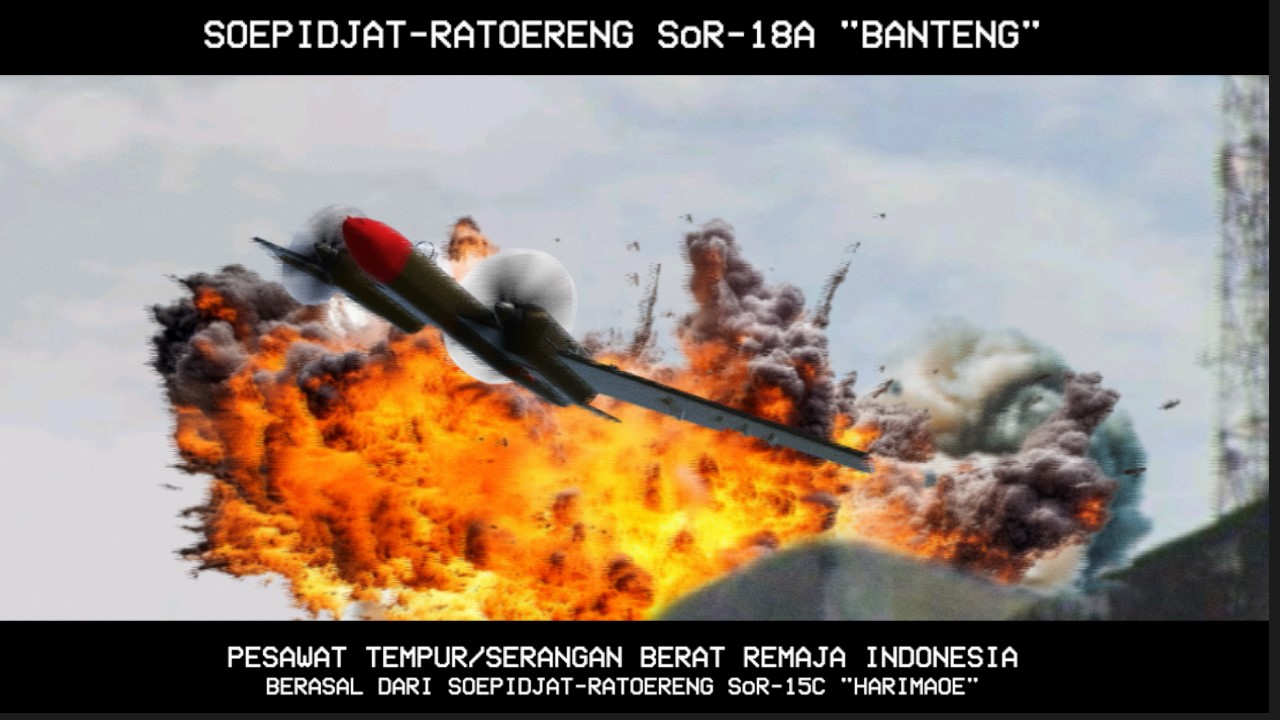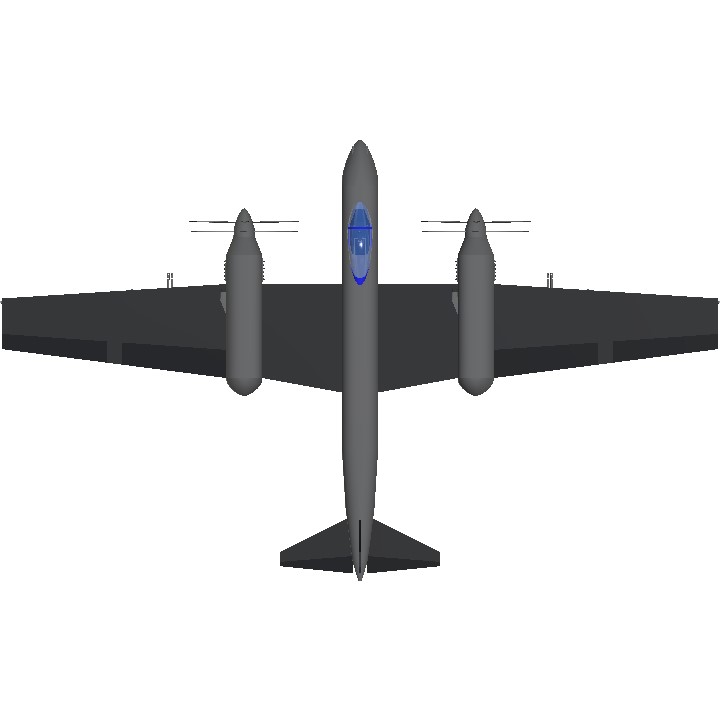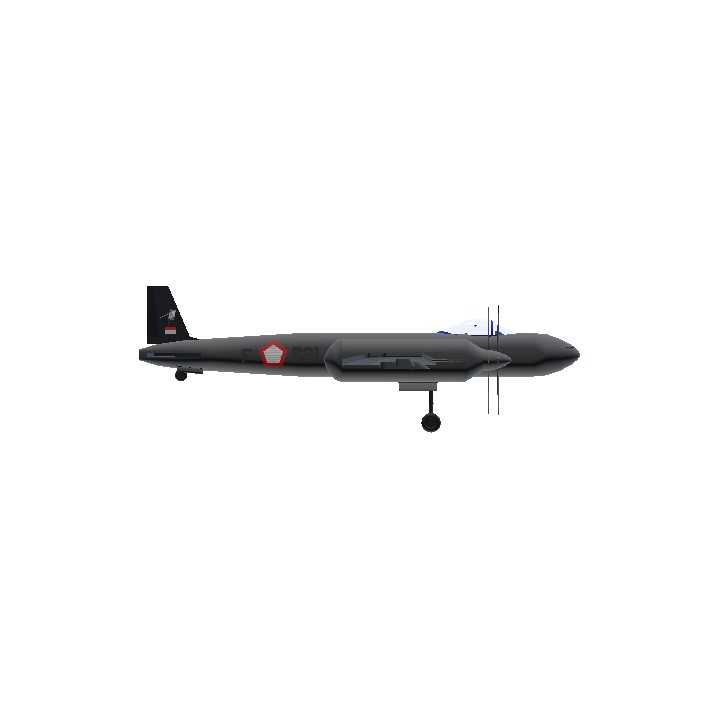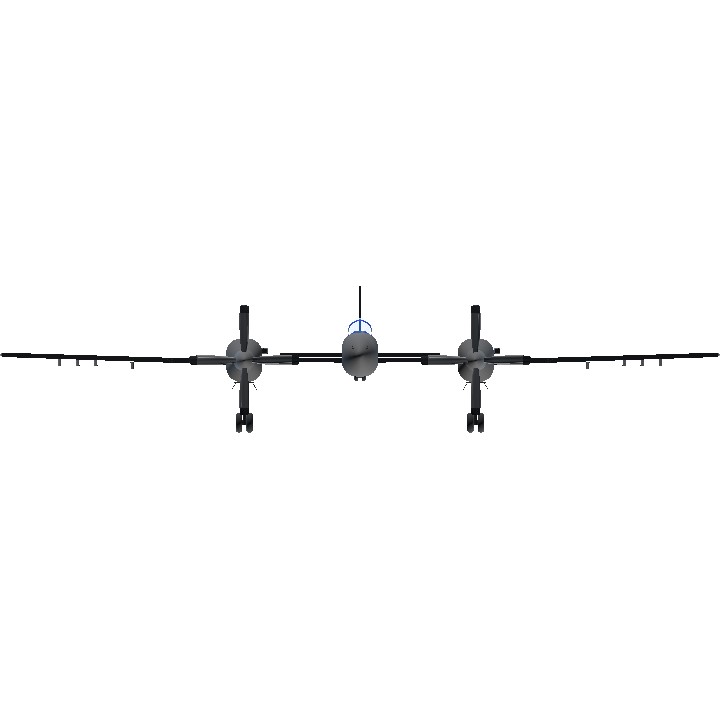This opening text is inspired on Noname918181818181818181.
This aircraft contains arts (or decal) used on the vertical stabilizer of an aircraft:
Uno (Sam Yuki)'s pose. (Credit: PixelMeteor on YouTube)
As Dutch aggressions continued, the Indonesian youths began to develop a heavy fighter and attack aircraft.
But, before it could make it's maiden flight, the Dutch hostilities ended on 27th December of 1949. Ultimately, the aircraft made it's first flight on 1950... And entered service in 1951.
So, enjoy, or...

You will be kicked out of the class. (Credit: Papa Artha on YouTube)
The Soepidjat-Ratoereng SoR-18 "Banteng" is an Indonesian twin-engined, contra-propelled, heavy fighter/attack aircraft designed by Peroesahaan Pesawat Oedara Soepidjat-Ratoereng. However, when the Dutch hostilities ceased on 27th December of 1949, the aircraft entered service with the Angkatan Oedara Repoeblik Indonesia (now TNI AU) on 1950s. Powered with two Soetingrat M-16A5E liquid cooled, turbocharged, V12 engine, the aircraft remained in service until it was replaced with fighter jets on 1978.
Development
As Dutch aggressions continued in 1948, the Indonesian aircraft manufacturer, Peroesahaan Pesawat Oedara Soepidjat-Ratoereng, decided to design a heavy attack aircraft, derived from it's predessor, the SoR-15C.
The aircraft was supposed to be on it's maiden flight, but when the Dutch hostilities ceased on 27th December, 1949, the aircraft's first flight was postponed to 27th February of 1950. After 1 year of postponing, the aircraft made it's first flight.
After many tests and others, the aircraft was then put into service with the Indonesian Air Force, on 1951.
Operational History
The first batches were delivered with 6 of them entering service with the Angkatan Oedara Repoeblik Indonesia (now TNI AU).
When Permesta Rebellion broke out on 22nd February of 1958, the aircraft was supposed to be stationed to serve alongside Indonesian military, but when SoR-15 fighter aircrafts was deployed and stationed against Permesta, the aircraft instead acted as reconnaissance, where it would serve until 20th October of 1961.
On 19th December of 1961, when Operation Trikora was started, the SoR-18 "Banteng" heavy fighter/attack aircrafts were deployed to Papua following the beginning of the operation. The aircraft, was stationed in Amahai and Morotai, along with the Mikoyan-Gurevich MiG-17.
During Operation Trikora, the SoR-18 "Banteng" attacked Dutch military bases, as well as the Mokmer airport, which had damaged the airbase in Dutch New Guinea.
4 of the aircrafts were shot down by Dutch Hawker Hunters during the operation.
The aircraft remained in service until, in 1978, the aircraft was finally retired, after 27 years of active service. The aircraft was replaced with the fighter jets.
Variants
- SoR-18A - First variant, introduced to service on 1951. This variant has hardpoints under the wing, allowing the aircraft to act as a heavy fighter/attack role.
- SoR-18B - Reconnaissance variant. Most of the weapons were removed.
- SoR-18C - Two-seat trainer variant.
- SoR-18D - Upgraded variant of SoR-18A. To counter against Hawker Hunters, the aircraft was equipped with radar warning reciever on the nose, with chaff and flares installed on the tail of an aircraft, allowing the aircraft to fire air-to-air missiles, or air-to-ground missiles. 152 were built while others were upgraded.
Production ended on 1966 with 323 units were built.
Notes
- The aircraft was derived from Soepidjat-Ratoereng SoR-15 "Harimaoe".
Specifications
General Characteristics
- Created On Android
- Wingspan 81.6ft (24.9m)
- Length 50.0ft (15.3m)
- Height 16.5ft (5.0m)
- Empty Weight 11,456lbs (5,196kg)
- Loaded Weight 16,599lbs (7,529kg)
Performance
- Horse Power/Weight Ratio 0.24
- Wing Loading 23.1lbs/ft2 (112.8kg/m2)
- Wing Area 718.4ft2 (66.7m2)
- Drag Points 5509
Parts
- Number of Parts 138
- Control Surfaces 7
- Performance Cost 656




